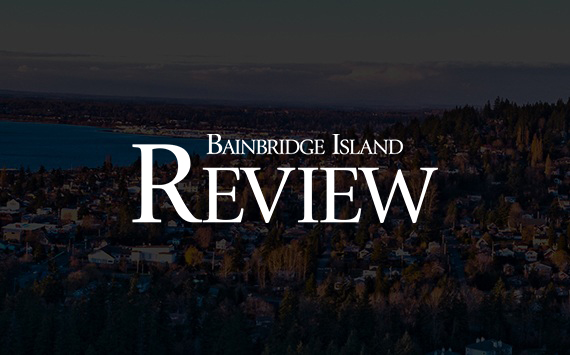Historians plan a new account of the island’s Croatian family heritage.
The island’s Croatian fishermen sail the open waters of memory more than the briny trails of salmon that once took them from Eagle Harbor to Alaska and the California coast.
Before the memories of these unique islanders fade, two Bainbridge historians hope to cast a broad net over their tales, gathering recollections and photos for a book documenting the local immigrant fishing community.
“The last of the full-timers were the last of a breed,” said Bainbridge Island Historical Society president and fisherman’s son Gary Loverich. “They came here with nothing, and they built an industry.”
With former Review editor and author Jack Swanson, Loverich plans to produce a 100-page book on the history of island fishermen over the next two years.
Swanson wrote and designed “Picture Bainbridge,” a photo history of the island published in 2002 with Loverich’s research assistance.
Wishing to flesh-out a chapter of that tome devoted to the Croatian fishing community of Eagledale, Loverich began compiling his own family’s history.
Then Jay Gage, a fishing industry executive, approached Swanson about financing a book on the island’s fishing heritage, just as “Picture Bainbridge” was going to press.
“I felt it was important to preserve their history,” said Gage, an Eagle Harbor resident. “The Uglesiches, Svorniches, Rerecichs, Sarniches – all from Croatia – were some of the best fishermen in the Northwest, and I’ve been friends with members of those families most of my life.”
Swanson and Gage discussed the project over several months, with Gage recently donating $10,000 to jump-start work on the book.
While still in the planning phase, much of the book will spotlight Eagledale’s Croatian community, Loverich said.
The community swelled with so many Adriatic fishermen bearing names ending with “ich,” early islanders referred to Eagledale as “Ichville.”
Paul Svornich, one of the few working fishermen remaining on the island, grew up in Eagledale’s fishing community.
He learned the trade from his father, two uncles and his grandfather, Anton “Tony” Svornich, who came to Bainbridge from the Croatian island of Dugi Otok in 1908.
“I had a wonderful opportunity as a kid to work with these men,” Svornich said. “They were great role models. They had such diversity of character. They were colorful, hardworking, very professional and had a strong sense of integrity.”
The community was closely linked, with Loverich working on Svornich’s father’s fishing boat.
“As soon as I was done with high school it seemed natural to join a crew,” Loverich said of his start in the fishing industry in the early 1950s. “I had always heard the old-timers tell stories of how the fishing season went up in Alaska or the San Juans. It was a real adventure. It was something that captures a person’s imagination.”
While Swanson has signed on to write and design the book, he said he’ll greatly depend on Loverich’s knowledge of local maritime history.
“Gary’s the key guy on this,” Swanson said. “I’m just the mechanic, hauled in to do the dirty work.”
The pair plan to travel the region collecting oral histories and photos from people connected to the island’s fishing families. Their list of 30 contacts continues to grow, Swanson said, with many descendants of Bainbridge fishermen living in Poulsbo, Anacortes, Seattle and Bellingham.
Swanson said the transcribed interviews will be archived at the museum as he narrows down stories to include in the book.
Swanson said the island’s history is marked by immigrants drawn by Bainbridge’s maritime industries.
“People came here from all over – Croatia, Japan, Hawaii, the Philippines,” he said. “They got here very simply – they stepped on a boat delivering lumber to their island from ours. The ships came with an American crew but three or four jumped ship. So they hired locals, who then jumped ship here.
“That’s why we’ve got such a crazy culture. I want to find out more about that.”
So does Svornich. He said a recent trip to a fishing village in India has sparked renewed interest in his own community.
“The village in India was a thriving community,” he said. “It might have been impoverished by American standards, but the kids were well-fed, the men were all working together on little boats, the women were mending nets. The people were happy.
“That got me thinking about my fishing community, only three generations old. It felt like a ghost of what it once was. But I still feel it. I feel the validity of my ancestors in the harbor. I’m honored that this book will acknowledge what was once a thriving, working waterfront community.”


